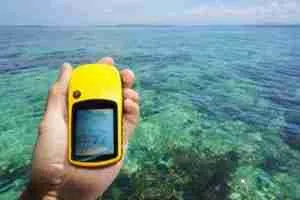It’s a scary thought when your jet ski won’t start and you’re worried about the expensive repair bill at the dealership, or the thought of being stranded.
Through this guide, I’ll be helping you diagnose the core problems with jet skis that don’t turn on when you hit the start button. Essentially, most of the problems you’ll encounter are actually quick fixes.
Editor’s Note: Avoid messing around with your starting system and battery unit unless you have electrical knowledge. These carry high volts and may cause injury or death for the individual who lacks knowledge and expertise. If in doubt, always use a licence personal watercraft dealership for repairs, servicing and diagnostics.
Reasons Why Jet Ski Won’t Start
In most instances, it’s the battery that is causing the problems with your jet ski not starting up.

Let’s unpack all the common faults for Yamaha, Sea-Doo and Kawasaki here:
1. Weak or Bad Battery
Batteries on jet skis are designed to last 2 to 3 years in normal conditions. If you use your jet ski more frequently (say every weekend) then their lifecycle reduces especially as they have mild exposure to salt water despite being tucked away in the engine bay.
You can now buy batteries online and they ship really fast. Check out these batteries for instance. I actually recommend ordering one as a spare so you can quickly change it out even if your current battery is good.
2. Jet Ski Has Sucked Up Something
Check the rear end of your jet ski to see if it has sucked up something like a rope, stick, rocks, plastic bags or even a sea creature. True! I’ve found several jet skiers who have sucked up little fish into their intakes.
To prevent your jet ski from sucking up debris, don’t run it so close to shore. Essentially you’ll want momentum and turn off the engine when you’re in less than 1 meter of water before reaching the sand.
3. Bad Starter Relay
Your starter relay could be shot through. Unfortunately, the easiest way to handle this is to take it into the dealership. If you’re under warranty, then your warranty could be voided if you choose to take on the work yourself even if it’s a quick part replacement.
4. Broken Button
The button used to start your jet ski could actually be faulty. This isn’t common but I’ve seen it before. If you’ve got a new battery installed and the relay looks fine, then the culprit could be the $3 button that the manufacturer installs in the factory which isn’t engaging.
5. Bad Alternator
Your alternator may not be charging the battery when you’re riding. It’s a total disaster when you reach a beach and go for a ride, only to try and start up later and there’s no life left. That’s going to be an embarrassing call to the coast guard and my recommendation is to pack a spare solar battery charger just in case. These are very affordable and pack easily into the front storage locker.
6. Blown Fuses
Have you checked your fuses? This often can be a fault of multiple other issues too. One quick check of that fuse panel and you may find other issues. Also, check the starter motor solenoid.
In some models, there is more than one fuse box so don’t assume you’re seeing every single fuse there. Consult your owners manual for the full low-down and you can find these online.
7. You Copied The Key
When getting a new set of jet ski keys, you actually can’t have the key copied by a locksmith. It has to be done by an authorised dealership and many beginners make this mistake.
Go and get your original key and throw the ‘copy key’ in the trash as it’s useless. Modern-day jet ski keys have special codes designed to prevent theft which is matched up to the jet ski and only dealerships can assign new ones.
8. Faulty Fuel Injectors
Another less obvious problem is the fuel injectors. If your jet ski has sat idle for years then this is a common issue. It’s not that expensive actually to replace the fuel injectors.
If you’re using an older jet ski which hasn’t been started for several years, then consider some fuel treatment concentrate. This can cure ethanol problems within the engine bay.
9. Fuel Pump Issues
How old is the fuel you’re running? Is the fuel pump in good working order? You can’t start a jet ski without a solid fuel pump as well as hoses which are primed properly.
With this you’ll want to check the pump, its hoses and the fuse. And…I’m sorry to mention this one…but is there fuel in the tank? Have you physically looked inside the fuel tank?
10. Bad Spark Plugs
Bad spark plugs are common in cars just as they are in jet skis. These are super cheap to replace and you can find brand new spark plugs available right on Amazon. These take a few days to ship so I recommend dropping into your local automotive store who typically has spark plugs capable for jet skis.
11. The Jet Ski is Hydrolocked
Have you already tried flushing out your jet ski the wrong way? This is a common mistake. I’ve written a guide here on how to properly flush it out. A hydro-lock in a jet ski means that water can’t escape internally and you’re stuck (as is the engine) and you really need a dealership to rectify this. This applies to Sea-Doo, Yamaha and Kawasaki.
12. Technical PWC Faults
Jet skis today have multiple computer systems on board. As a result, there are technical issues that are beyond the scope of the average rider to be diagnosed. Again – another reason why the dealership is the best idea as they have the experience and the systems to hook it up and check out your jet ski error codes.
More Assistance
If you need more assistance, you can leave your question below and I’ll do my best to help you out. Firstly, however, use this list and tick off each one as you go.
If you call the dealership, then their #1 advice will be to bring it in for diagnostics. How much will this cost? Anywhere from $150 to $700+.
For that reason, see how you go tinkering along yourself but remember the risks associated with batteries. Leave that for the experts!



![29 Best Jet Ski Accessories [#17 is Awesome]](https://www.jetskiadvice.com/wp-content/uploads/2020/05/Jet-Ski-Accessories-300x200.jpg)
![7 Best Jet Ski Life Jackets That Fit Well [2022 Guide]](https://www.jetskiadvice.com/wp-content/uploads/2020/05/Jet-Ski-Life-Jacket-GUide-300x200.jpg)




